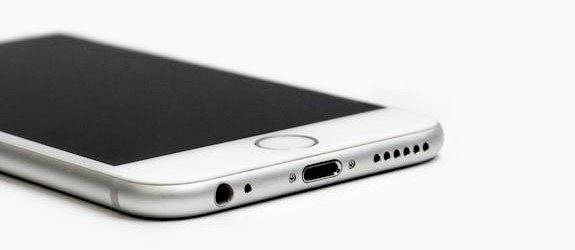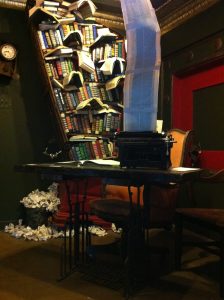How can an academic library be a place of play–especially the kind of play that fosters a lifetime of curiosity? I sometimes feel that people forget that play is possible in an academic library. Or that people think play is the province of school and public libraries. I feel that there is a perception that academic libraries are for adults, researchers, and serious learners, which is absolutely not the case. Our academic library is committed to the success of our youngest daycare toddler patron to our oldest retiree and everyone in between.
The struggle with play in an academic library is the perception of “play”. People think “play” and think of games, boisterous people, loud noises, snacks, and, well, messy things. Many I work with think academic libraries aren’t supposed to be messy places because that is for public libraries and children’s zones. I disagree. I think “messy” is a process. No one completes a project without a plan or data gathering. I think “messy” can be fun. If we create spaces where they feel safe enough to fail and that incite a spark of curiosity, I think users of university libraries could surprise us with their creativity.
One of my favorite “play” zones for academic libraries is the makerspace. A makerspace is a place of self-directed learning motivated by curiosity. Laura Fleming wrote, “Makerspaces should be personalized to your school community, promote deep understanding of concepts, provide access to all students to ensure equity, invite student-driven exploration, differentiate for students’ needs, convey an intentional vision, and inspire students to make.” Our university is strong in STEM, design, apparel, and business. The University Library provides space to our campus partner Student Innovation Idea Labs (SIIL) for a Maker Studio. In that Maker Studio, they have 3D printing, embroidery, sewing , laser cutting, sticker making, and letter press. This aligns with not only course content, but a lot of co-curricular student group interests, too. The Maker Studio is a popular place to go in the library.
Academic libraries could also create studios for students to explore audiovisual media. Podcasts are popular. Audiobooks are popular with commuters, but podcasts are more flexible. They are shortform story pieces that could be listened to (and sometimes finished) while in the car, riding a skateboard, or standing in line. I attended a Digital Humanities Consortium’s podcasting workshop. They told the attendees about recommended equipment, inexpensive options, and promoted the University Library’s tech lending program where students can borrow a podcasting mic and other equipment for free. With the increasing popularity of podcasts, providing a space for recording gives people a chance to play with audio. Our library converted a study room into Media Studio. It has a recording studio with a green screen for easier background editing and some foam panels for sound buffering.
Our campus has a daycare. The children’s collection was not housed in a child-friendly or visually appealing area. In a collaboration with the Office of Student Success and the Early Childhood Studies department, the Bronco Family Space was born. Lower shelves of easier-to-reach books, manipulatives, puzzles, costumes, child-size furniture, and toys populate the area encouraging our youngest library users to play, read, touch, and discover in any manner, speed, and position they choose. There are also story times scheduled in that space because of the Library’s partnership with the Department of Early Childhood Studies. The space is not fancy or particularly large, but children do not need that. Their imagination is greater than the space; they just needed a space of their own within the academic library.
Programming as microlearning would also be a great way to encourage play within an academic library. Microlearning is about taking a broad topic and parsing it into easier to assimilate chunks. Ballance uses the theory of microlearning to apply to designing online lessons, but I believe the base principle is translatable to library programming. An event tied to one of the many heritage months, awareness months, and celebration days provides plenty of opportunity to showcase library materials, world culture, hidden gems, and quirky stories. For example, did you know that January is National Hot Tea Month? There could be a Boba and Books event where we discuss boba, boba drink history, showcase books featuring boba, and ask the campus boba shop to collaborate on a tea tasting or boba drink add-ons tasting. It is a micro-lesson about a popular drink and allows the boba shop an easy marketing platform. Another event could be a tea brewing lesson. Tea is consumed all over the world, but the tea ceremonies from East Asia are the most well known outside of English afternoon tea service.
Public libraries have long established themselves as a source for play and learning in the lives of children. I think academic libraries with users who are mostly adults should not exclude themselves from the play as learning bandwagon. The opportunities open to academic libraries to encourage lifelong curiosity and creativity is equal to public libraries, but we tend to narrow the focus to academics first. It is good to remember that recreation is as necessary to learning as academic support. Playing is for life. Life is for learning. Curiosity is key. This quote from the Student Innovation Ideas Lab says it all.
Resources
Ballance, C. (2015, August). Mobilizing knowledge to create convenient learning moments. eLearn Magazine. https://elearnmag.acm.org/featured.cfm?aid=2513574
Cal Poly Pomona [CPP]. (2025). Student Innovation Ideas Lab: Home. https://www.cpp.edu/siil/index.shtml
CPP University Library. (2025). Media Studio. https://libguides.library.cpp.edu/cppmediastudio
CPP University Library. (2025). Bronco Family Space. https://www.cpp.edu/library//bronco-family-space.shtml
Fleming, L. (2018). The kickstart guide to making great makerspaces. Corwin.


